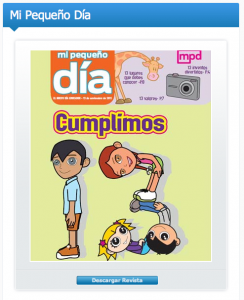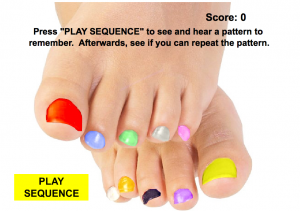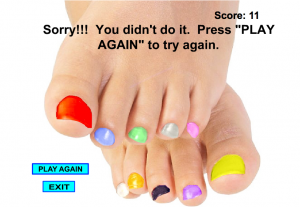A little story featuring Caillou to mark Thanksgiving.
Hope you enjoy it as much as I did!
httpv://youtu.be/1K4Z8wtJH2A
A little story featuring Caillou to mark Thanksgiving.
Hope you enjoy it as much as I did!
httpv://youtu.be/1K4Z8wtJH2A
 Not sure how I got to this today – I think the cold in Konstanz has wiped my brain! However, I just had to share this lovely magazine in Spanish for small people, downloadable free from elnuevodia.com All you need is Acrobat Reader and the PDF downloads for you to read it.
Not sure how I got to this today – I think the cold in Konstanz has wiped my brain! However, I just had to share this lovely magazine in Spanish for small people, downloadable free from elnuevodia.com All you need is Acrobat Reader and the PDF downloads for you to read it.
The graphics are big, bright and bold, and the topics covered fit well with the primary curriculum – healthy eating, family, the world, animals, festivals and so on. Lots of puzzles and activities, and short pieces of writing make it ideal for using with young learners.
I like the current issue which celebrates the 13th birthday of Mi pequeño día, with lots of lists of 13 things including 13 great inventions, 13 places to visit in Puerto Rico (the country of origin of the magazine) and 13 ecological habits.
I also enjoyed the issue Somos más about the world population reaching 7000000000. It includes some nice activities about people of the world and someone talking about their life.
It seems that you can only access the last 10 issues so might be worth visiting periodically and downloading some for future reference…

 As regular readers will know, I am an eTwinning Ambassador (that is a very old picture!). I say ‘I am’ as, whilst I’m no longer in the UK, I am hoping to continue to help promote and encourage involvement in eTwinning now I’m in Switzerland. Why? Because I’ve seen the difference it’s made to my school in terms of teaching and learning, the experiences that it’s brought and the new openess to ‘otherness’ that’s it’s brought. I see a school that looks outwards, celebrates the heritage of its pupils and understands more about UK traditions through looking at others. I see a school that is proud of differences and actively looks to make contact with people with different life experiences. And I see pupils who have grown in confidence through seeing that speaking a language other than English, or having a different religion to most others is actually a brilliant thing, not something to hide as well as experiencing the joy of talking to their peers across the world.
As regular readers will know, I am an eTwinning Ambassador (that is a very old picture!). I say ‘I am’ as, whilst I’m no longer in the UK, I am hoping to continue to help promote and encourage involvement in eTwinning now I’m in Switzerland. Why? Because I’ve seen the difference it’s made to my school in terms of teaching and learning, the experiences that it’s brought and the new openess to ‘otherness’ that’s it’s brought. I see a school that looks outwards, celebrates the heritage of its pupils and understands more about UK traditions through looking at others. I see a school that is proud of differences and actively looks to make contact with people with different life experiences. And I see pupils who have grown in confidence through seeing that speaking a language other than English, or having a different religion to most others is actually a brilliant thing, not something to hide as well as experiencing the joy of talking to their peers across the world.
There is currently an Impact Study being carried out by Education for Change into eTwinning – see below. Evidence is being collected in a numbeer of ways but one is via a survey. I’d encourage you to fill it in as I suspect that the future of eTwinning with depend on this study!
If you want to find out more, please feel free to contact me and ask questions!
EfC has been has been commissioned for a 21 month study of the impact of eTwinning on pupils, teachers and schools. The study will also be an analysis of the factors which contribute to, or hinder, successful participation in eTwinning.
eTwinning Partnerships is an activity under the Comenius sub-programme of the EU Lifelong Learning Programme. It was launched in 2005 with the objective of enabling school twinning as an opportunity for all young people to learn and practice information and communication technology (ICT) skills, as well as promoting awareness of the multicultural European model of society. The European Commission foresaw that eTwinning could be a major catalyst in intensifying the sorts of cooperation already underway among schools. Since the launch of the new platform in 2008-09 visits to the eTwinning portal have increased by over 300%, indicating a steep rise in interest among teachers. Registration continues to rise, and there are currently almost 100,000 registered eTwinners in 73500 schools.
The impact study will look at participation in eTwinning and what hinders or helps it success, specifically:
• the networking of schools and teachers across Europe and their capacity to build social capital, and the way in which eTwinning is managed and promoted
• the perspective of participating teachers
• the impact of eTwinning on pupils, teachers and others at school level
• the overall impact of eTwinning within the context of the Comenius Programme
The main activities will include:• Desk research and consultation with Central and National Support Services and others
• A general survey of all eTwinning teachers, in 23 languages
• Case studies research on impact in at least 20 schools in 10 countries, using country-based researchers
• In the light of findings, will make recommendations on possible improvements to the eTwinning action, its design and management.
Thank you to June da Silva for pointing this out via primarylanguages@mailtalk.ac.uk.
November 21st is World Hello Day on which people are encouraged to greet 10 people to demonstrate the importance of personal communication in maintaining peace.
World Hello Day was begun in response to the conflict between Egypt and Israel in the Fall of 1973. Since then, World Hello Day has been observed by people in 180 countries.
People around the world use the occasion of World Hello Day as an opportunity to express their concern for world peace. Beginning with a simple greeting on World Hello Day, their activities send a message to leaders, encouraging them to use communication rather than force to settle conflicts.
As a global event World Hello Day joins local participation in a global expression of peace. The World Hello Day web site address is http://www.worldhelloday.org.
As June says in her email, what an opportunity to promote communication in other languages too. I will be attempting to greet 10 people in Swiss German and / or their native language. I’m sure I can find 10 people who speak 10 different languages at home amongst my boys’ new classmates and parents…
www.ipl.org/div/hello will help me in my task as will http://www.digitaldialects.com/
And how about these lovely song?
httpv://youtu.be/kjwkMmdqmH4
One of the problems with submitting an article to a journal / paper is that you have no control over how they publish it. In my article in The TES I hyperlinked to the toe nail game to which I referred. Obviously this didn’t come out in print but I’d hoped (naively) that it might in the electronic form.
In my blog post yesterday it was hyperlinked, but to respond to queries, here it is!
Go to the SpanishSpanish site and click START.

Follow the instructions.
 Listen and watch – a toenail will flash and the colour (word) will pop up in Spanish. You will also hear it.
Listen and watch – a toenail will flash and the colour (word) will pop up in Spanish. You will also hear it.
When it says GO click that toenail.
The idea is to get the longest chain. I wasn’t very good today!
The exercise is good because you see and hear the word each time it is presented and each time you click the nail, and also because it’s good for your memory! Alex in Reception managed 25!!! Not bad for a 4 year old on his second Spanish lesson who remembered the words in Spanish, not just the sequence of colours. He’s now Y3 and is on my G&T Linguist list!
An enduring favourite game!
 Following on from a mentions here and here and a short review, I had my first article published in The TES today! So exciting!
Following on from a mentions here and here and a short review, I had my first article published in The TES today! So exciting!
Here’s the link to the article as it appeared. The original text is below – doesn’t look like it was edited much, a fact about which I am very chuffed!
I emailed Whitehouse Common immediately and told them – and within minutes it was on the school website.
Lots of lovely tweets too – thanks to @valleseco whose tweet was the first I knew of publication, and @bellaale @IrisConnect @davidErogers @matttodd1 @NajmC @suzibewell @whcps @bootleian @bgflnews @chrisfullerisms @TaskMagic @dughall and anyone else who’s tweeted it since I wrote this post!
Hope this won’t be my last article…
Me gusta / Je t’aime / Ich mag / ???
What do learners like doing in MFL? Lisa Stevens ponders this and reflects on activities that her primary school pupils have enjoyed.
When I think back to my best experiences as a learner, they were memorable because they captured my attention and imagination. And it seems that many other learners have a similar experience.
I asked my pupils aged 3-11 what they enjoyed about learning languages, and they came up with many ideas. A class I taught in Reception who are now in Year 3 always want to play a memory game involving painted toenails because a member of their class holds the school record for the game (he was 4 when he set it!), and a Year 6 group remember retelling the story of El Nabo Gigante (The Enormous Turnip) when they were in Year 2 with silly hats and actions.
These were one off examples – when I asked a group of year 6s, they were more general, listing singing, rhymes and chanting as a favourite activity because they don’t do that in other lessons. They also said that they could better remember things that they had learned this way as they recalled the tune or the rhythm as well as the words. Towards the end of Year 6 we do a unit on a Spanish café and one activity involved rewriting a song about ordering in a café to the tune of The Twelve Days of Christmas. The task involved recalling vocabulary but was more then that as learners had to consider whether the rhythm of the words they were suggesting fitted the tune, making them concentrate on stress patterns and syllables. It also offered the opportunity to be imaginative as each group wanted to be the most original and perhaps funniest.
This type of creative task, using language in ‘unusual’ ways, is popular in other year groups too. In response to the story ¡Fuera de aquí Horrible Monstruo Verde! (Go away Big Green Monster), Year 3 used 2D shapes from their Maths lessons to create faces, feature by feature with a photograph taken at each stage. They then to wrote their own (simplified) version of the story saying hello to each new facial feature then telling it to go away using the photographs to create a comic strip. The sense of achievement – “I wrote a story in Spanish!” – was echoed in Year 5 when they rewrote a section of a famous Spanish poem, La Primavera by Antonio Machado, then went on to write their own poems about seasons in Spanish. Many of them were unsure about writing poems in English let alone Spanish, and here the language learning fitted well with their Literacy lessons. Year 4 were equally proud of their work in Healthy Heroes week, creating Superheroes Saludables (Healthy Superheroes), and building on their previous learning about sport and food in Spanish to create a clean living hero and unhealthy enemies. They did something no other class had done and, in a theme week, that holds great sway.
What do all these activities have in common? They were all led by the learners, all involved independence and imagination, and they all involved a challenge. The learners enjoyed themselves, feeling a sense of achievement when they’d finished, and I enjoyed ‘teaching’ them as each learner was able to stamp their individuality on the task.
Lisa is a Primary Language educator and consultant. She is PLL and International coordinator at Whitehouse Common Primary School, and works with her LA (Birmingham) as a Language Coach supporting schools with their language provision. She is an Apple Education Mentor, an eTwinning Ambassador and BGfL MFL Curriculum Associate, and is on the Spanish Committee of ALL.
(I know – that’s not all strictly accurate, but it was when I wrote the post!)
¡Vámonos! ©2025. All Rights Reserved.
Powered by WordPress.
Theme by Phoenix Web Solutions